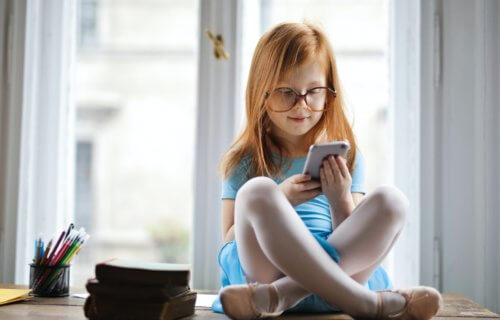ATLANTA, Ga. — As most children start their summer vacations, many parents are busy booking their back-to-school doctor’s checkups. Unfortunately, the last year has been anything but ordinary when it comes to health. Even if youngsters avoided COVID-19 while staying in quarantine and remote learning, a recent study reveals bad news for those upcoming visits to the eye doctor. Researchers say the combination of home confinement and too much time looking at digital screens appears to be severely impacting kids’ vision.
The international team from the United States and China finds the rates of myopia, or near-sightedness, among young children is three times higher during the pandemic than in the previous five years. Researchers examined over 123,000 children between six and 13 years-old during the global health emergency. Results reveal a “substantial” uptick in near-sighted cases among children between six and eight years-old.
“Myopia is a major health issue around the world. The World Health Organization estimates that half of the population of the world may be myopic by 2050,” researchers write in their report in the journal JAMA Ophthalmology.
So what causes our eyes to become near-sighted?
Study authors say they’re finding more and more evidence in recent years that spending less time outdoors can lead to someone’s eyes becoming myopic. Additionally, the amount of time and intensity of work, especially involving digital screens, also plays a role in declining vision.
Previous studies point to the growing use of smartphones, computers, and other digital devices as playing a central part in failing eye health, especially among children. Even before the pandemic and the switch to remote learning, one report discovered the rate of teens needing glasses nearly doubled from 2012 to 2018.
Eye problems skyrocketed during quarantine
Researchers in China actually started this study back in 2015, using photoscreenings to examine students’ eyes at the start of each school year in September. The team conducted 2020’s exams in June, after schools reopened in the country following a five-month lockdown.
“Due to COVID-19 in 2020, the school-aged children were confined to their homes from January to May, and online courses were offered. For the screened population, their daily online course hours for grades 1 and 2 is 1 hour and the time for grades 3 to 6 is 2.5 hours. Children’s indoor activities and screen time therefore increased and their outdoor activities were decreased, often to none,” researchers write.
The results uncovered a stunning spike in near-sightedness among the youngest children in the study. From 2015 through 2019, researchers only diagnosed 5.7 percent of six-year-olds with myopia by 2019. The 2020 findings show 21.5 percent of six-year-olds are now myopic. Moreover, 26.2 percent of seven-year-olds and 37.2 percent of eight-year-olds also displayed poorer vision.
Study authors do note most of the increased cases of near-sightedness were mild. Also, nine-year-olds had the highest rate of myopia (45.3%) however, this rate only increased by two percent from 2018.
“Concerns have been raised about whether home confinement may worsen the burden of myopia. To our knowledge, we provide the first evidence that the concern may be justified,” the team adds.
What can parents do to protect their children’s vision?
Although vaccinations are helping to reopen nations across the global, health officials continue to warn of the threat of COVID mutations which could start lockdowns all over again. With that in mind, researchers say parents need to control screen time “as much as possible” and get their kids back outdoors.
“This substantial myopic shift was not seen in any other year-to-year comparison, making the cause possibly due to the unusual occurrence of home confinement in 2020,” study authors say.
The team adds the results do not show the same level of declining eye health among children between nine and 13.
“These findings led us to a hypothesis that younger children are more sensitive to the environmental change than older children.”
